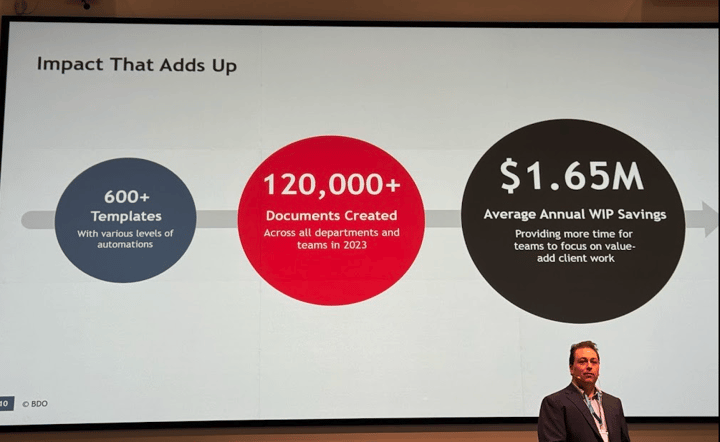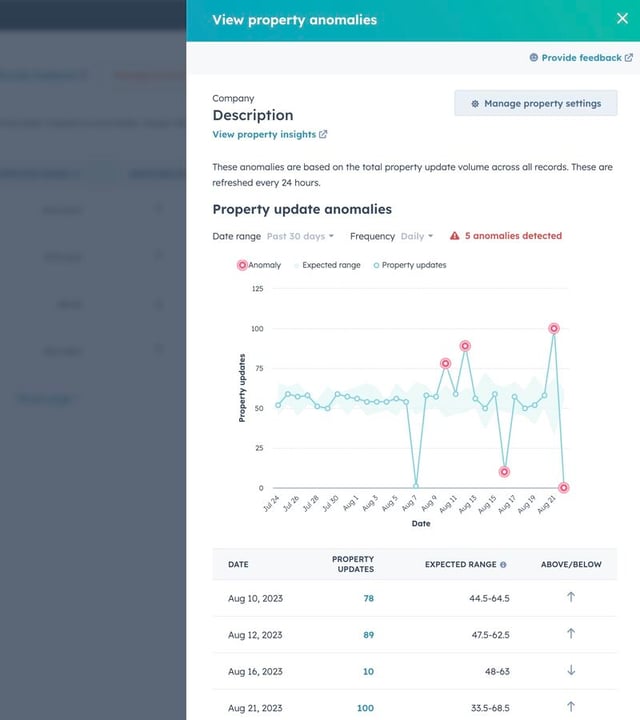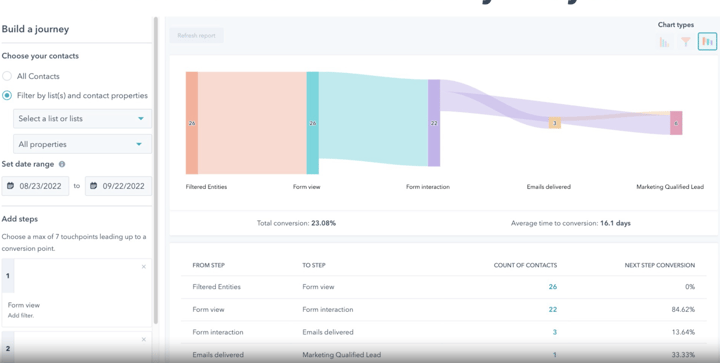Operationalise your brand management. How to effectively use brand management systems across teams
Even though my Ops carreer started out in Marketing, the current focus on optimising demand generation and lead handovers has pulled my work strongly in the direction of Sales Operations which has been a lot of fun and has helped the Marketers I work with realise the value of their efforts into attributed pipeline. More recently though I've had the chance to immerse myself in the opposite end of that 'funnel' if you will: Brand management and communications.
Brand management is not just about aesthetics; it's a strategic imperative that requires meticulous attention to detail and innovation. And this is how I approach the processes involved when considering how to most effectively deploy the tooling used by Branding and Communications teams.
It seems like my client isn't the only B2B company with a strong focus on their Brand. According to Peter Weinberg and Jon Lombardo in this MarketingWeek article:
"Exactly two years ago, we published a prophecy that we called ‘the Flippening’.
The Flippening is the magical moment when B2B businesses realise that brand marketing creates much more financial value than so-called ‘performance marketing’, and B2B CMOs start allocating at least 51% of their budget to top-of-funnel activities."
Large companies operating within matrix organizational structures face unique challenges in maintaining brand consistency across diverse departments and markets. However, by adopting a systematic approach and leveraging cutting-edge technologies like Templafy and Frontify, senior managers can revolutionize how they produce, manage, and distribute content, driving alignment and efficiency throughout the organization.
Optimizing Team Workflows with Branding and Communication Platforms
Effectively utilizing branding and communication platforms transforms the way teams collaborate and execute tasks related to content creation, brand management, and campaign localization. Here's how these platforms empower teams to work seamlessly together:
-
Efficient Content Creation: Teams leverage dynamic templates provided by the platform, ensuring consistency and adherence to brand guidelines across all materials. With centralized asset management, team members easily locate and utilize the latest brand assets, eliminating the need for time-consuming searches. Additionally, document automation streamlines workflows, allowing teams to focus on crafting compelling content rather than repetitive tasks.
-
Enhanced Collaboration: Real-time editing capabilities enable team members to collaborate simultaneously on documents, presentations, and other content, fostering a culture of collaboration and creativity. Feedback mechanisms integrated into the platform facilitate communication and idea-sharing, ensuring that every team member's voice is heard and valued. Centralized project management features keep everyone aligned and accountable, simplifying task assignments and progress tracking.
-
Efficient Campaign Localization: Across markets, teams seamlessly collaborate on localized campaigns, leveraging the platform's tools for translation management and version control. Simplified translation workflows streamline the localization process, enabling teams to deliver content in multiple languages efficiently and accurately. Data-driven insights gleaned from the platform inform iterative optimization strategies, ensuring that localized campaigns resonate with target audiences and drive meaningful results.
Which branding and communication platforms are out there?
By embracing branding and communication platforms, teams optimize their workflows, enhance collaboration, and drive impactful outcomes in their brand management and marketing initiatives. These platforms serve as catalysts for innovation, enabling teams to focus on creativity and strategy while streamlining the execution of tasks across diverse functions and geographies.
There are several excellent platforms and tools available for brand management and content collaboration, each offering unique features and functionalities tailored to the needs of businesses. Here are some of the best platforms widely recognized in the industry:
-
Frontify: Frontify is a comprehensive brand management platform that offers tools for creating style guides, managing digital assets, and facilitating collaborative workflows. It enables teams to centralize brand assets and guidelines, streamline collaboration, and ensure brand consistency across all touchpoints.
-
Templafy: is a leading content enablement platform that specializes in streamlining content creation and management within familiar software environments such as Microsoft Office. It provides dynamic templates, smart compliance checks, and centralized asset management capabilities, empowering teams to create on-brand content efficiently.
-
Bynder: Bynder is a cloud-based digital asset management (DAM) platform that helps organizations centralize, organize, and distribute digital assets. It offers features for asset storage, metadata management, and workflow automation, making it easy for teams to collaborate on content creation and distribution.
-
Acquia: Acquia is another popular DAM platform that enables organizations to store, manage, and share digital assets securely. It offers features such as version control, workflow automation, and analytics, helping teams streamline their content workflows and maximize the value of their digital assets.
-
Adobe Experience Manager (AEM): AEM is a comprehensive content management solution that integrates with Adobe Creative Cloud applications. It offers features for content creation, management, and delivery across multiple channels, making it ideal for organizations with complex content management needs.
-
CoSchedule: CoSchedule is a content marketing platform that offers tools for planning, organizing, and executing marketing campaigns. It includes features such as editorial calendars, social media scheduling, and marketing automation, helping teams collaborate effectively and streamline their content workflows.
-
Airtable: Airtable is a flexible collaboration platform that combines the features of a spreadsheet with a database. It can be customized to fit various workflows and use cases, making it suitable for managing content calendars, project timelines, and team tasks.
These platforms represent just a few of the many options available for brand management and content collaboration. The best platform for your organization will depend on factors such as your specific needs, budget, and existing technology stack. It's essential to evaluate each platform's features, integrations, and user experience to determine which one aligns best with your requirements.
Seamless Collaboration in Global Campaign Localization
Rolling out marketing concepts and campaigns across diverse markets and functions presents several challenges for large companies. From cultural nuances to regulatory requirements, each market requires careful localization to ensure relevance and effectiveness. The right tooling can and should play a pivotal role in facilitating seamless collaboration during this process, empowering teams to work together efficiently and cohesively across geographical boundaries.
-
Centralized Campaign Briefs: Begin by creating centralized campaign briefs that outline the overarching objectives, target audience, key messaging, and creative concepts. Templafy's document automation capabilities make it easy to generate and distribute these briefs, ensuring that everyone is aligned from the outset.
-
Collaborative Ideation Sessions: Host collaborative ideation sessions where teams from different markets and functions can come together to brainstorm ideas and share insights. Frontify's collaborative workflows enable real-time collaboration, allowing participants to contribute ideas, provide feedback, and iterate on concepts seamlessly.
-
Localized Content Creation: Leverage Templafy's dynamic templates to facilitate localized content creation while maintaining brand consistency. By providing localized assets and guidelines within familiar Microsoft Office applications, teams can easily adapt campaign materials to suit the needs of their respective markets without sacrificing brand integrity.
-
Cross-Functional Review and Approval: Establish standardized processes for cross-functional review and approval of localized campaign materials. Frontify's collaborative workflows streamline this process, allowing stakeholders to provide feedback and sign off on assets efficiently. Version control features ensure that everyone is working with the latest approved versions, minimizing errors and discrepancies.
-
Translation Management: Utilize Templafy's integration with translation management systems to streamline the localization of campaign content across multiple languages. By centralizing translation processes and automating workflows, organizations can ensure accuracy and consistency in messaging while minimizing turnaround times.
-
Performance Tracking and Optimization: Monitor the performance of localized campaigns using data-driven insights from Templafy and Frontify. Analyze metrics such as engagement rates, conversion rates, and market-specific KPIs to assess effectiveness and identify areas for optimization. Use these insights to iterate on campaigns iteratively, ensuring continuous improvement and relevance across markets.
By adopting a collaborative approach to campaign localization and leveraging the capabilities of Templafy and Frontify, organizations can overcome the complexities of managing marketing concepts across diverse markets and functions. With streamlined processes, centralized communication, and data-driven optimization, teams can ensure that localized campaigns resonate with target audiences and drive meaningful results, ultimately contributing to the success of the overarching brand strategy.
Understanding Templafy: Empowering Content Creation with Precision
Templafy serves as the backbone of content creation, offering a suite of powerful tools and features to streamline the process and ensure brand compliance. Its robust platform provides:
-
Dynamic Templates: Templafy offers a vast library of customizable templates for various document types, including presentations, proposals, and reports. These templates are intelligently integrated into Microsoft Office applications, ensuring that employees have access to the latest branded assets directly within familiar software environments.
-
Smart Compliance Checks: With Templafy, brand consistency is no longer a guessing game. The platform employs smart compliance checks to validate content against brand guidelines in real-time, flagging any deviations and guiding users towards adherence.
-
Asset Management: Centralized asset management capabilities enable organizations to maintain a single source of truth for logos, images, and other brand assets. Templafy's intuitive interface makes it easy to organize, search, and distribute assets, ensuring that employees always have access to the right materials.
-
Document Automation: By automating repetitive tasks and standardizing document workflows, Templafy helps teams work more efficiently while minimizing errors and inconsistencies. From contract generation to sales proposals, the platform streamlines the entire document lifecycle, freeing up valuable time for strategic initiatives.

Unleashing the Power of Frontify: Centralizing Brand Management and Collaboration
Frontify complements Templafy's content creation capabilities with comprehensive brand management functionalities, enabling organizations to centralize their brand assets, guidelines, and workflows. Key features include:
-
Style Guide Creation: Frontify empowers organizations to create comprehensive style guides that codify brand identity elements such as colors, fonts, and voice guidelines. These guides serve as a single source of truth for all stakeholders, ensuring consistent brand representation across channels and touchpoints.
-
Digital Asset Management: Frontify's digital asset management (DAM) capabilities enable organizations to organize, store, and share brand assets efficiently. With powerful search and version control features, teams can easily find the assets they need and ensure they're always using the latest versions.
-
Collaborative Workflows: Frontify facilitates seamless collaboration across departments and geographies, allowing teams to work together on brand projects in real-time. From reviewing design mockups to collecting feedback on brand assets, the platform streamlines collaboration and ensures everyone is aligned towards common objectives.
-
Brand Portal: Frontify's brand portal serves as a centralized hub for all brand-related resources, making it easy for employees, partners, and external agencies to access the information they need. Whether it's downloading a logo or reviewing brand guidelines, stakeholders can find everything they need in one place, reducing friction and improving efficiency.
Orchestrating Collaboration Across Departments and Markets
In a matrix organization, effective brand management requires more than just technology; it requires a strategic approach to collaboration and alignment. By integrating Templafy and Frontify with Microsoft tools like SharePoint, senior managers can orchestrate collaboration across departments and markets, fostering a culture of cohesion and innovation.
-
Cross-Functional Workshops: Encourage cross-functional workshops and brainstorming sessions where teams can collaborate on brand initiatives and content creation projects. Templafy and Frontify provide the tools needed to facilitate these sessions seamlessly, ensuring that ideas flow freely and everyone has a voice.
-
Standardized Processes: Establish standardized processes and workflows for content creation, review, and approval. By leveraging Templafy's smart compliance checks and Frontify's collaborative workflows, organizations can ensure that all content meets brand guidelines and quality standards before being distributed.
-
Data-Driven Decision-Making: Use data-driven insights from Templafy and Frontify to inform content strategy and optimization efforts. Analyze metrics such as engagement rates, conversion rates, and brand sentiment to understand what resonates with your audience and adjust your approach accordingly.
Conclusion: Elevating Brand Management to New Heights
In today's hyper-connected world, brand management is more critical than ever. By harnessing the power of technologies like Templafy and Frontify, senior managers can unlock new levels of efficiency and effectiveness in how they produce, manage, and distribute content across diverse departments and markets. With Templafy's robust content creation capabilities and Frontify's comprehensive brand management functionalities, organizations can navigate the complexities of matrix organizational structures with ease, driving alignment, collaboration, and innovation every step of the way.





